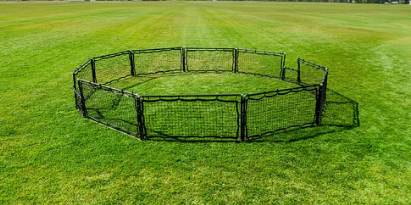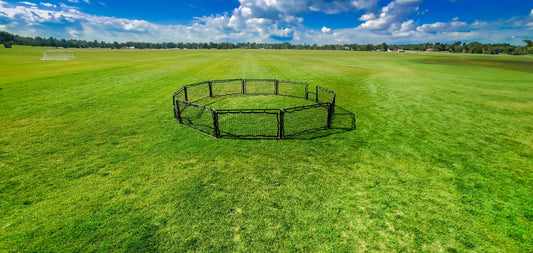In the ever-evolving landscape of entertainment and recreation, the boundaries between different forms of play have become increasingly fluid. Gone are the days when games were confined to neat little boxes, each with its own set of rules and conventions. Today, a new breed of games is emerging, and they're breaking all the traditional rules. These are the games that combine different games together, blending elements from various genres to create something entirely new and exhilarating.
Today, we're about to embark on a journey into the realm of "game fusion," where boundaries are blurred, and imagination knows no limits. We'll delve into a world where chess meets poker, where video games collide with board games, and where strategy and chance coexist in harmony. These hybrid games represent the cutting edge of gaming innovation, offering a fresh perspective on what it means to have fun and challenge ourselves.
Whether you're a die-hard board gamer, a video game enthusiast, or someone who simply loves trying new things, this exploration of game fusion promises to be an exciting adventure. So, fasten your seatbelts, and let's dive headfirst into a world where innovation knows no bounds and the possibilities are limited only by the imagination of game designers and players alike. Welcome to the world of hybrid games—where old meets new, strategy intertwines with chance, and the thrill of discovery is just a roll of the dice away.
Tchoukball:

Tchoukball is a unique and dynamic team sport that combines elements of handball, volleyball, and basketball. It was created in the 1960s by Dr. Hermann Brandt, a Swiss biologist, as a way to encourage physical fitness, teamwork, and fair play. The sport has since gained popularity around the world, with official rules and regulations established by the International Tchoukball Federation (FITB). Here's a more in-depth explanation of how tchoukball is played:
Objective: The primary objective of tchoukball is to score points by successfully throwing the ball at a rebound frame positioned at the opponent's end of the court in such a way that the opposing team cannot catch it. The rebound frame is a specialized netted frame designed to send the ball rebounding back toward the playing area in a predictable manner.
Equipment:
- Tchoukball: The game is played with a tchoukball, which is a small, inflatable ball. Tchoukballs are designed to be soft and safe, minimizing the risk of injury.
- Rebound Frame: There are two rebound frames, one at each end of the playing court. These frames are set at a 60-degree angle to the ground. They consist of a net attached to a rigid frame. The rebound frame is a key element of the game, as it determines the direction of the ball after it is thrown at it.
- Playing Court: Tchoukball is typically played on an indoor court with specific dimensions, including a marked semicircle around each rebound frame where players cannot enter while in possession of the ball.
Teams: Each team consists of seven players on the field at a time. Teams are typically divided into offensive and defensive players. The offensive players attempt to score points by throwing the ball at the rebound frame, while the defensive players try to catch the ball after it rebounds off the frame.
Rules and Gameplay:
- Throwing the Ball: Players can throw the tchoukball in any direction, including at the rebound frame, as long as they follow certain rules. When throwing at the rebound frame, players aim to make the ball rebound in such a way that it is difficult for the opposing team to catch. If the ball is caught by the defending team after hitting the rebound frame, the attacking team does not earn a point.
- Catching: The defending team must attempt to catch the ball after it rebounds off the frame. If they successfully catch it, they gain possession and transition to offense. Dropping the ball or failing to catch it allows the attacking team to maintain possession.
- Passing and Movement: Players use teamwork, quick passing, and strategic movement to advance the ball and create scoring opportunities. Players can pass the ball to their teammates as many times as they like.
- No Contact: Tchoukball is a non-contact sport. Players are not allowed to physically obstruct, tackle, or make contact with their opponents. Violations result in penalties.
- Time Limit: Games are typically played in two halves, each with a set time limit (e.g., 15 minutes each). The team with the most points at the end of the game wins.
- Scoring: Points are scored when the attacking team successfully throws the ball at the rebound frame in such a way that the defending team cannot catch it. Each successful throw results in one point for the attacking team.
- Penalties: Penalties can be assessed for various rule violations, including physical contact, stepping out of bounds, or improper throwing technique. Penalties may result in free throws or turnovers.
- Fair Play and Sportsmanship: Tchoukball places a strong emphasis on fair play, sportsmanship, and respect for opponents. It encourages a positive and inclusive atmosphere for players of all skill levels.
Tchoukball is a fast-paced and strategic sport that requires agility, teamwork, and precision. It can be enjoyed by people of all ages and skill levels and is played at recreational and competitive levels around the world. The sport continues to evolve and grow in popularity, with international competitions and a dedicated global community of players and enthusiasts.
Bossaball:

Bossaball is a relatively new and unique sport that combines elements of volleyball, soccer (football), gymnastics, and capoeira, a Brazilian martial art. It is often described as a highly dynamic and visually striking sport played on an inflatable court with trampolines on each side of the net. Here's a detailed explanation of Bossaball:
Court and Equipment:
- Inflatable Court: The Bossaball court is typically an inflatable surface that resembles a beach volleyball court. It provides a soft and bouncy playing surface. The court includes a net in the middle, dividing it into two sides.
- Trampolines: There are trampolines on each side of the net, positioned in the playing area. These trampolines allow players to jump higher and perform acrobatic moves.
- Bossawall: Surrounding the court, there is a padded wall (the Bossawall) that players can use for rebounds and as a platform to perform aerial maneuvers.
- Bossaball: The game is played with a specially designed Bossaball, which is a larger and softer version of a volleyball. It's filled with air and has a different bounce compared to a traditional volleyball.
Teams and Players:
- A standard Bossaball team consists of four to five players on each side of the net.
Rules and Gameplay:
- The objective of Bossaball is to score points by sending the ball into the opponent's court in a way that they cannot return it successfully.
- Players use a combination of volleyball-style hand passes, kicks (soccer-style), and headers to get the ball over the net.
- The trampolines allow players to jump higher and perform aerial maneuvers, adding an acrobatic element to the game.
- The game combines athleticism with entertainment. Players often engage in spectacular dives, flips, and tricks to keep the ball in play.
- Bossaball incorporates music and dance elements. There is typically a DJ playing music during the game, and players may perform dance moves, especially after scoring points.
- Each set in Bossaball is played to a certain number of points, typically 25, and a team must win by at least two points.
- The server starts the rally by jumping on the trampoline and serving the ball over the net. The receiving team tries to return the ball, and the rally continues until one team scores a point.
Scoring:
- Points can be scored in various ways, such as when the ball lands in the opponent's court without them successfully returning it, when the opponent commits a fault (e.g., double contact), or when a team fails to return the ball within the allowed number of touches (usually five).
Spectacle and Entertainment:
- Bossaball is not only about competition but also about entertainment. The combination of music, dance, and acrobatics makes it a visually exciting sport to watch.
- Spectators often participate in the lively atmosphere, dancing to the music and cheering for their favorite teams.
Bossaball is a relatively niche sport, but it has gained popularity in various parts of the world, particularly in Europe and South America. It is known for its dynamic and inclusive nature, making it accessible to both experienced athletes and casual players. Bossaball events often feature exhibitions, freestyle performances, and tournaments, adding to the sport's appeal as a unique and entertaining spectacle.
Cestoball:
Cestoball is a team sport that combines elements of basketball, netball, and handball. It is a relatively lesser-known sport primarily played in Argentina, where it originated in the early 20th century. Cestoball is played predominantly by women and is known for its fast-paced and dynamic gameplay. Here's an in-depth explanation of Cestoball:
Court and Equipment:
- Court: Cestoball is typically played on a rectangular court, similar in size to a basketball court. The court is divided into two halves by a centerline.
- Baskets: There are two baskets located at opposite ends of the court, similar to basketball hoops. These baskets are circular and elevated above the ground, and players aim to throw the ball through the opponent's basket to score points.
- Ball: Cestoball is played with a ball that is smaller and lighter than a basketball, making it easier to handle and pass.
Teams and Players:
- Each team in Cestoball consists of seven players on the court at a time. These players are divided into offensive and defensive roles.
Rules and Gameplay:
- The primary objective of Cestoball is to score points by throwing the ball through the opponent's basket. A goal typically counts as one point, although there may be variations in scoring rules.
- Players are not allowed to move with the ball. Instead, they must pass it to their teammates using a combination of throwing and catching, similar to netball.
- Like basketball, players must adhere to rules regarding traveling (moving with the ball without dribbling) and double dribbling.
- The defensive team tries to prevent the offensive team from scoring by intercepting passes, blocking shots, and attempting to gain possession of the ball.
- Contact is limited in Cestoball, and physical contact is generally not allowed, similar to netball rules.
- The game is played in quarters or halves, with a set time limit for each period. The team with the most points at the end of the game wins.
Positions:
- Cestoball positions are similar to those in basketball, with players designated as guards, forwards, and a center. Each position has specific responsibilities on offense and defense.
Substitutions:
- Substitutions are allowed in Cestoball, and teams can make changes during stoppages in play.
Scoring:
- Scoring in Cestoball is achieved by successfully throwing the ball through the opponent's basket. The ball must pass through the basket's ring to count as a goal.
Cestoball Variations:
- There are variations of Cestoball that may have slightly different rules and court dimensions. These variations can be played recreationally or in organized leagues.
Cestoball is a sport that demands teamwork, strategy, and quick decision-making. It is known for its fast-paced nature, requiring players to pass and shoot accurately while also defending against the opponent's scoring attempts. While Cestoball is primarily played in Argentina, there are efforts to promote the sport internationally and expand its popularity beyond its country of origin.
Gaga Ball:

Gaga ball is a fast-paced and highly energetic game that combines elements of several traditional games and sports to create a unique and engaging activity. While it has its distinct rules and features, gaga ball draws inspiration from various sources. Here's an explanation of the different games and concepts that contribute to the formation of gaga ball:
- Dodgeball: Dodgeball is perhaps the most apparent influence on gaga ball. In both games, the objective is to eliminate opponents by hitting them with a ball. However, in dodgeball, players use their hands to throw balls, whereas in gaga ball, they hit the ball with their hands to eliminate others.
- Four Square: Four square is a game where players hit a ball with their hands to keep it within the boundaries of four squares. Gaga ball's playing area often resembles a large four-square court, with players using their hands to hit the ball within the boundaries and eliminate opponents.
- Pit Ball: Gaga ball is sometimes referred to as "pit ball" because it is typically played in a sunken or enclosed pit-like area. The pit design prevents the ball from rolling out and encourages continuous play, similar to how a pit ball pit keeps balls contained.
- Basketball: In gaga ball, players often employ dribbling skills similar to basketball, where they bounce the ball off the ground with their hands while avoiding their opponents.
- Handball: Handball is a sport where players use their hands to hit a ball into the opponent's goal. In gaga ball, the goal is to hit the ball below the knees of other players to eliminate them, akin to scoring in handball.
- Tag and Tag Variations: Like tag games, gaga ball involves players actively moving to avoid being tagged out by the ball. Players must stay agile, quick on their feet, and employ dodging tactics reminiscent of tag games.
- Rules from Other Ball Games: Gaga ball incorporates rules found in various ball games, such as not double-hitting the ball or adhering to boundary rules like those in soccer.
Overall, gaga ball synthesizes aspects from dodgeball, four square, handball, basketball, and tag games to create a fast-paced, inclusive, and physically engaging activity. Its versatility and simplicity have contributed to its popularity among people of all ages, making it a staple of playgrounds, summer camps, and community centers around the world. Players of gaga ball enjoy the combination of skill, strategy, and active play that this unique game offers.
9 Square:
9 Square is a creative blend of two classic playground and gym favorites — 4 Square and volleyball. Like 4 Square, the game uses a grid-based structure divided into nine connected squares, each occupied by a single player. However, instead of bouncing a ball on the ground, players hit a lightweight ball upward through the air, similar to volleyball. The goal is to keep the ball in play by volleying it into another player’s square without letting it touch the frame or the ground.
This hybrid design combines the fast-paced, strategic movement of 4 Square with the energy of volleyball. It’s accessible to all skill levels, encourages constant engagement, and works perfectly for both casual fun and organized play. Whether set up indoors or outdoors, 9 Square offers the perfect balance of competition, coordination, and laughter.
In the world of game fusion, where boundaries are crossed and creativity knows no limits, we've embarked on an exhilarating journey that has brought us face to face with the incredible possibilities that arise when different games blend together. From the strategic depth of chess merged with the excitement of poker to the dynamic action of bossaball and the eclectic mix of cestoball, game fusion has introduced us to a whole new universe of entertainment.
As we conclude this exploration, it's evident that game fusion is not just about combining rules and gameplay mechanics; it's about forging unique experiences that challenge our skills, spark our imaginations, and unite us in the spirit of competition and camaraderie. It's about pushing the boundaries of what we thought was possible in the world of games.
These hybrid games offer something for everyone, from the casual player seeking a fun pastime to the dedicated competitor craving a new challenge. They remind us that innovation thrives at the intersection of tradition and transformation, and that the spirit of play knows no bounds.
So, as you embark on your own gaming adventures, consider trying out some of these fusion games. Embrace the blend of old and new, strategy and chance, athleticism and creativity. Let the thrill of discovery, the joy of competition, and the spirit of unity propel you into a world where the possibilities are as limitless as your imagination.
In the world of game fusion, the future is a canvas, and the only limits are the ones you choose to set. So, dive in, have fun, and keep exploring the ever-evolving, ever-creative world of games that combine different games together. Your next gaming obsession may be just around the corner, waiting for you to discover it. Happy playing!







